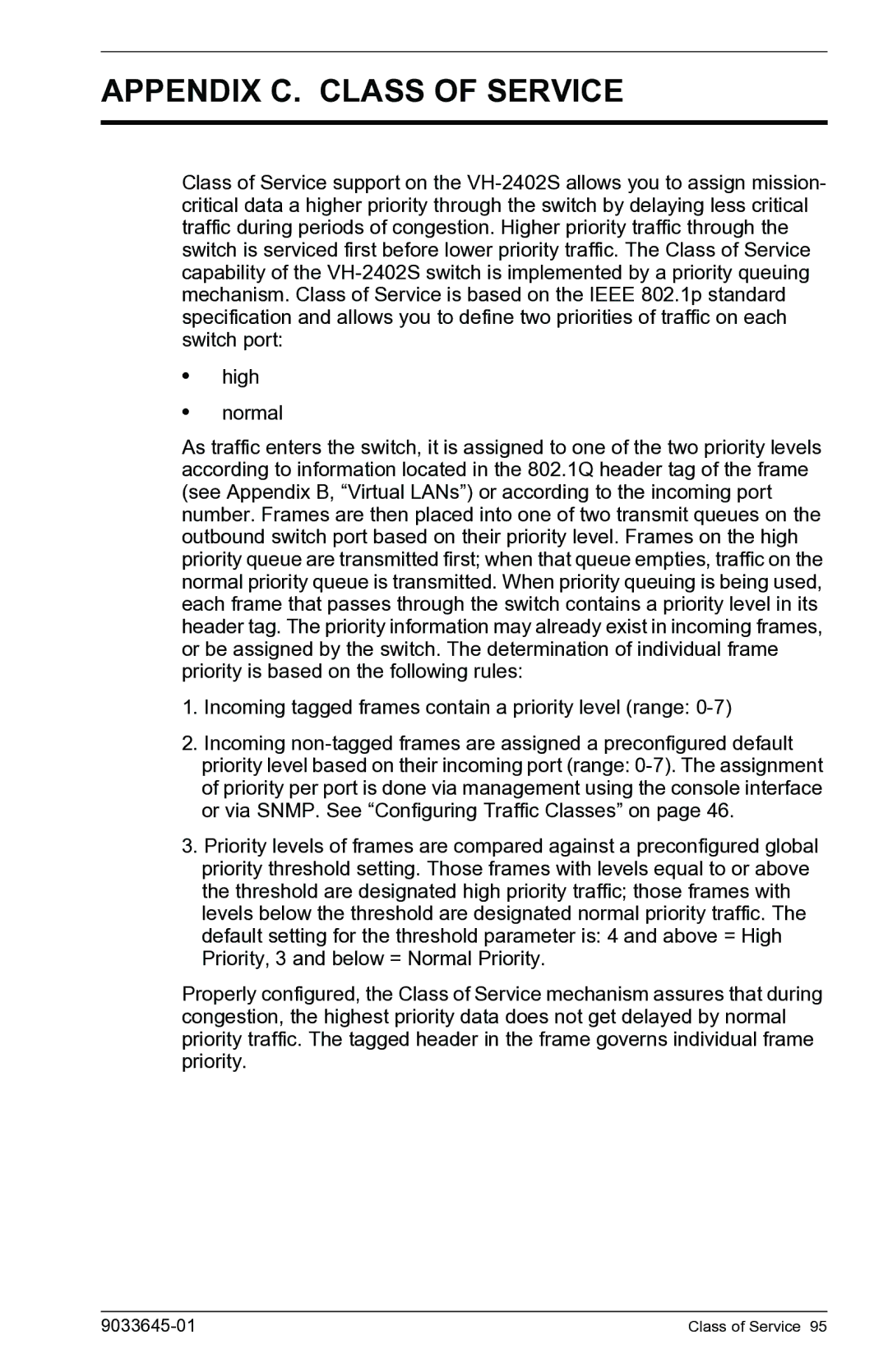
APPENDIX C. CLASS OF SERVICE
Class of Service support on the
•high
•normal
As traffic enters the switch, it is assigned to one of the two priority levels according to information located in the 802.1Q header tag of the frame (see Appendix B, “Virtual LANs”) or according to the incoming port number. Frames are then placed into one of two transmit queues on the outbound switch port based on their priority level. Frames on the high priority queue are transmitted first; when that queue empties, traffic on the normal priority queue is transmitted. When priority queuing is being used, each frame that passes through the switch contains a priority level in its header tag. The priority information may already exist in incoming frames, or be assigned by the switch. The determination of individual frame priority is based on the following rules:
1.Incoming tagged frames contain a priority level (range: 0-7)
2.Incoming
3.Priority levels of frames are compared against a preconfigured global priority threshold setting. Those frames with levels equal to or above the threshold are designated high priority traffic; those frames with levels below the threshold are designated normal priority traffic. The default setting for the threshold parameter is: 4 and above = High Priority, 3 and below = Normal Priority.
Properly configured, the Class of Service mechanism assures that during congestion, the highest priority data does not get delayed by normal priority traffic. The tagged header in the frame governs individual frame priority.
| Class of Service 95 |
